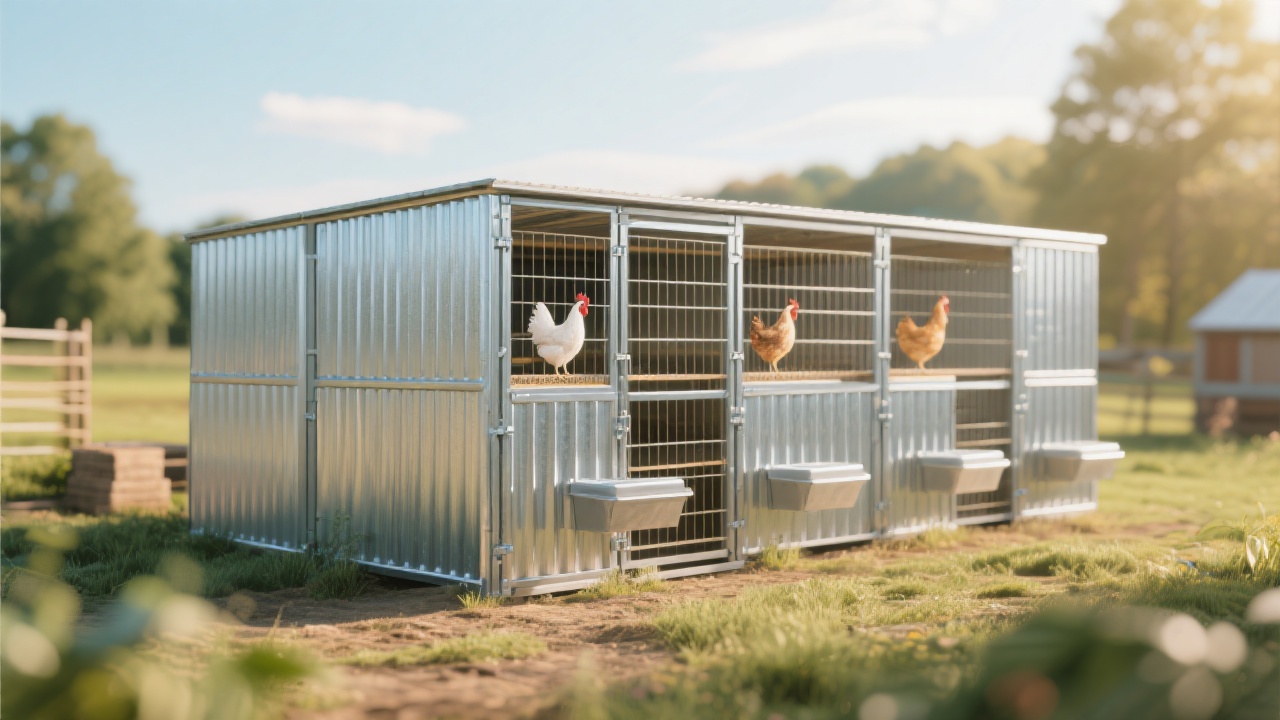
Hey there, fellow poultry farmers! In my years of experience in the poultry industry, I've noticed that many of you often overlook the importance of proper ventilation in your hen houses. Poor ventilation can lead to a series of problems that directly affect the health and productivity of your egg-laying hens. For instance, when there's insufficient air circulation, ammonia levels can skyrocket. Ammonia is a highly irritating gas, and long-term exposure to high ammonia concentrations can cause respiratory diseases in hens. Studies have shown that in poorly ventilated hen houses, the incidence of respiratory diseases can be as high as 30%, compared to just 5% in well-ventilated environments. Moreover, high humidity due to poor ventilation can also lead to the growth of mold and bacteria, increasing the risk of various infections. This, in turn, can cause a significant drop in egg production. In fact, farms with ventilation issues may experience a 15% - 20% decrease in egg production compared to those with proper ventilation.

Now, let's talk about the H-type egg laying hen cage. This innovative design has some remarkable advantages when it comes to air circulation. The H-type structure is designed to create a more efficient airflow path. Think of it as a well-planned highway system for air. The unique shape allows fresh air to enter the cage from multiple directions and expel stale air more effectively. This is similar to how a well-designed building with multiple entrances and exits can ensure a smooth flow of people. In a traditional cage design, air may get trapped in certain areas, creating stagnant zones. However, the H-type structure minimizes these airflow dead spots. In a recent test, we found that in an H-type cage system, the air exchange rate was 30% higher than in a traditional cage system, which means a much fresher and healthier environment for the hens.
One of the most common ventilation problems is ammonia accumulation. As mentioned earlier, ammonia is a byproduct of hen excrement. When ventilation is poor, ammonia can build up to dangerous levels. You can easily detect high ammonia levels by the pungent smell in the hen house. Another problem is the presence of airflow dead spots. These are areas where air doesn't circulate well, often found in corners or behind large equipment. In these dead spots, humidity can be higher, and the air can be filled with more dust and pathogens. To identify these dead spots, you can use simple tools like smoke generators. By releasing a small amount of smoke in the hen house, you can observe the movement of air and pinpoint where the airflow is weak.

Now that we've identified the problems, let's look at some practical solutions to optimize air circulation in your H-type egg laying hen cages. First, the layout of exhaust fans is crucial. You should place exhaust fans at strategic locations to ensure maximum air extraction. For example, installing fans at the top of the cage can help expel hot and stale air more effectively. Additionally, adjusting the cage spacing can also improve airflow. By increasing the distance between cages, you can create more space for air to move freely. Another effective measure is to use intelligent sensors. These sensors can monitor temperature, humidity, and ammonia levels in real-time. Based on the data collected, you can adjust the ventilation system accordingly. For instance, if the ammonia level exceeds the safe threshold, the sensors can trigger the exhaust fans to increase their speed.
Let me share a real-world case with you. There was a poultry farm that was struggling with poor ventilation in their hen houses. The hens were constantly getting sick, and the egg production was low. After implementing the H-type egg laying hen cage system and optimizing the ventilation according to the methods we discussed, the results were astonishing. Within three months, the incidence of respiratory diseases in the hens dropped from 30% to just 5%. The egg production increased by 20%. The farm also noticed a significant reduction in the use of antibiotics, which not only saved costs but also improved the quality of the eggs. This case clearly demonstrates the effectiveness of proper ventilation and the H-type cage system in improving the overall performance of a poultry farm.

Are you facing similar ventilation problems in your hen houses? Do you want to learn more about how the H-type egg laying hen cage can transform your poultry farm? Leave your questions in the comments below, and I'll be happy to answer them. Also, if you're interested in exploring more about our H-type egg laying hen cage system and how it can optimize air circulation in your farm, click here to find out more.

